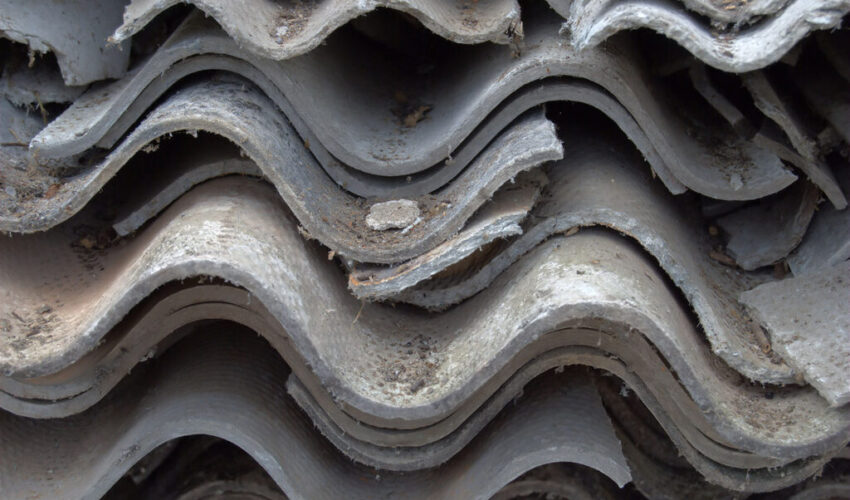How to Identify Asbestos: Signs, Locations and Safety Tips
Asbestos is a hazardous material that was widely used in Australian homes before 1997. While it is no longer used in construction, many older buildings still contain asbestos in walls, ceilings, floors, and insulation. Identifying asbestos containing material is crucial for homeowners, renovators, and tradespeople to ensure safety and comply with regulatory requirements, thereby avoiding accidental exposure.
Unlike other materials, asbestos fibres are microscopic and cannot be seen with the naked eye. However, certain characteristics of asbestos-containing materials (ACMs) can help you identify whether asbestos may be present. This guide will walk you through what asbestos looks like, where you might find it, and the steps to confirm its presence.
What Does Asbestos Look Like?
1. Fibrous or Layered Texture
Asbestos fibres are extremely thin, and in some cases, they may be visible in aged or damaged materials. These fibres can appear:
- Fluffy or wool-like in insulation
- Layered or flaky in older pipe insulation
- Powdery and crumbly when disturbed
Warning: If you see fibrous material breaking away from walls, ceilings, or pipes, avoid touching or disturbing it. It is not possible to determine if a material contains asbestos simply by visual inspection; professional testing is recommended.
2. Cement-Like Sheets with a Powdery Edge
Many older homes contain asbestos cement sheets, commonly known as fibro. These sheets may look like regular cement board, but they often have:
- A solid, compressed appearance
- A smooth surface but brittle, powdery edges when broken
- A dimpled or speckled texture on some older varieties
These sheets were used for walls, eaves, garages, and fences. It is crucial to properly assess materials for asbestos presence, as visual inspection is not sufficient. Testing by NATA accredited laboratories is recommended to identify asbestos containing products.
3. Small, Dimpled, or Speckled Patterns
Some ceiling and wall panels have a speckled, popcorn-like, or dimpled texture. These were commonly used in older decorative ceilings and wall finishes. If your home has an old popcorn ceiling or textured finish, it may contain asbestos. Asbestos products were widely used in buildings before 1997, and identifying such products is crucial for safety reasons.
4. Dark Bitumen Backing on Vinyl Floor Tiles
Many older vinyl floor tiles contain asbestos, especially those installed before the 1990s.
Signs to look for:
- Black or dark brown bitumen backing (used as an adhesive) often referred to as “black jack”
- 12” x 12” (30cm x 30cm) or 9” x 9” (23cm x 23cm) tiles, which were common sizes for asbestos-containing vinyl
- Worn or cracking linoleum flooring with fibrous backing
Homes built or renovated prior to 1997 are at higher risk of containing asbestos, making it crucial to identify and manage potential asbestos risks in these older properties.
5. Old, Flaking, or Aged Insulation
Asbestos was frequently used in insulation products, including:
- Pipe insulation – often appearing wrapped around pipes in layers
- Vermiculite Textured Ceilings – small, grey or silver granular material coated on ceilings (often in unit blocks)
- Fire-resistant insulation – found around hot water pipes, rope in wood burning fireplaces, stoves, fire doors, and heaters
If insulation is loose, flaky, or deteriorating, it may release asbestos fibres into the air. Being exposed to asbestos can lead to serious health risks, including both short-term and long-term exposure implications, such as the potential for developing related diseases over time.
6. Roofing and Fencing Materials
Older corrugated roofing and fencing sheets often contained asbestos. These materials:
- Resemble modern cement or fibreglass sheets
- Are usually grey, off-white, or weathered brown
- Often have streaking or patches of lichen growth due to age
If your roof or fence looks like old cement and was installed before 1997, it could contain asbestos. Some of these profiles were called super 6 (Super Six), or Suicide Sheeting, It is important to recognise the potential presence of asbestos in various building materials, especially during renovations or if these materials are damaged.
How to Identify Asbestos in Your Home
Because asbestos can be mixed with other materials, it is difficult to identify by sight alone. However, you can follow these steps to assess whether asbestos may be present:
It is also crucial to adhere to asbestos laws to avoid severe penalties, including fines and criminal charges, for violations.
1. Check the Age of Your Property
- Before the mid-1980s: Highly likely to contain asbestos.
- Between the mid-1980s and 1997: Possible asbestos presence.
- After 1997: Less likely, but older materials might still be present.
It is important to develop an asbestos management plan for both identified and assumed asbestos.
2. Look for Warning Signs
- Does the material have a stamp with a specific name or stating it does (or doesn’t) contain asbestos?
- Does the material have a fibrous, flaky, or powdery texture?
- Does it appear brittle or aged, with signs of wear or cracking?
- Are you seeing small dimples, a popcorn finish, or a rough texture on ceilings or walls?
While these signs can provide clues about the presence of asbestos, only testing can confirm whether a material contains asbestos, positioning testing as the singular reliable method to determine its presence.
3. Inspect Common Locations
Asbestos was widely used in Australian homes and can be found in:
- Ceilings (popcorn texture, ceiling tiles, flat fibro sheeting)
- Walls (internal and external) (fibro sheeting, textured finishes)
- Floors (vinyl tiles, linoleum, even the black glue used to stick them down)
- Roofs (corrugated cement roofing, decramastic shingles)
- Fences (hard cement-like panels and corrugated panels)
- Garages and sheds (cement walls and roofing)
- Gutters and downpipes (asbestos-cement pipes and other components)
It is important to identify locations where asbestos containing products may be found within various rooms or areas of a home.
4. Conduct a Professional Test
Since asbestos fibres are microscopic, laboratory testing is the only way to confirm its presence. The process involves:
- Hiring a licensed asbestos assessor to collect samples safely.
- Sending the sample to a NATA-accredited laboratory for testing.
- Receiving a confirmation report on whether asbestos is present.
DIY sampling is dangerous – disturbing asbestos materials without proper equipment can release fibres into the air. It is crucial to understand the importance of asbestos testing methods and procedures. Individuals can perform asbestos sampling, but safety, PPE and proper handling are paramount.
Asbestos Safety Precautions
When dealing with asbestos-containing materials, safety is paramount. Asbestos fibers can be extremely hazardous if inhaled, so it’s crucial to take the necessary precautions to prevent their release into the air. Here are some essential safety measures to follow:
1. Personal Protective Equipment (PPE)
Wearing the right Personal Protective Equipment (PPE) is vital when handling asbestos-containing materials. Ensure you have the following:
- Respiratory protection: Use a half-face or full-face respirator equipped with a HEPA filter to prevent inhaling asbestos fibers. Minimum requirement is a P2 graded mask.
- Protective clothing: Wear disposable coveralls, gloves, boot protectors and a hat/hood of coveralls to avoid skin contact with asbestos fibers.
- Eye protection: Use goggles or safety glasses with a splash guard to protect your eyes from asbestos exposure.
2. Safe Handling Practices
To minimise the risk of releasing asbestos fibers, follow these safe handling practices:
- Avoid disturbing the material: Do not touch, handle, or disturb asbestos-containing materials unless absolutely necessary.
- Use proper lifting techniques: Lift asbestos-containing materials carefully to avoid damaging them and releasing fibers into the air.
- Keep the material wet: Moistening asbestos-containing materials can help prevent fibers from becoming airborne.
3. Ventilation and Containment Measures
Proper ventilation and containment are crucial to prevent the spread of asbestos fibers. When working with asbestos-containing materials, consider these measures:
- Use a negative air pressure machine: This device helps contain asbestos fibers and prevents them from spreading to other areas.
- Seal off the area: Isolate the work area to prevent asbestos fibers from contaminating other parts of the building.
- Use a decontamination shower: After handling asbestos, a decontamination shower can help remove fibers from your skin and clothing.
What to Do If You Suspect Asbestos
- Do Not Disturb the Material
Cutting, drilling, sanding, or breaking asbestos materials can release fibres. - Engage a Professional
Contact a licensed asbestos removalist for assessment. - Plan for Safe Removal
If asbestos is confirmed, follow proper removal and disposal guidelines. - Follow Australian Regulations
Each state has strict laws on handling and disposing of asbestos. It is crucial to adhere to asbestos laws to avoid severe penalties, including fines and criminal charges, for violations.
Avoid Disturbing the Material
It’s essential to avoid disturbing asbestos-containing materials unless absolutely necessary. If you must handle these materials, follow the safe handling practices outlined above to minimise the risk of fiber release.
Contact a Professional for Assessment
If you suspect that a material contains asbestos, it’s best to contact a professional for assessment. A licensed asbestos assessor can confirm the presence of asbestos and provide guidance on how to handle the material safely.
By following these asbestos safety precautions, you can significantly reduce the risk of exposure to asbestos fibers and protect your health. Remember, safety first!

